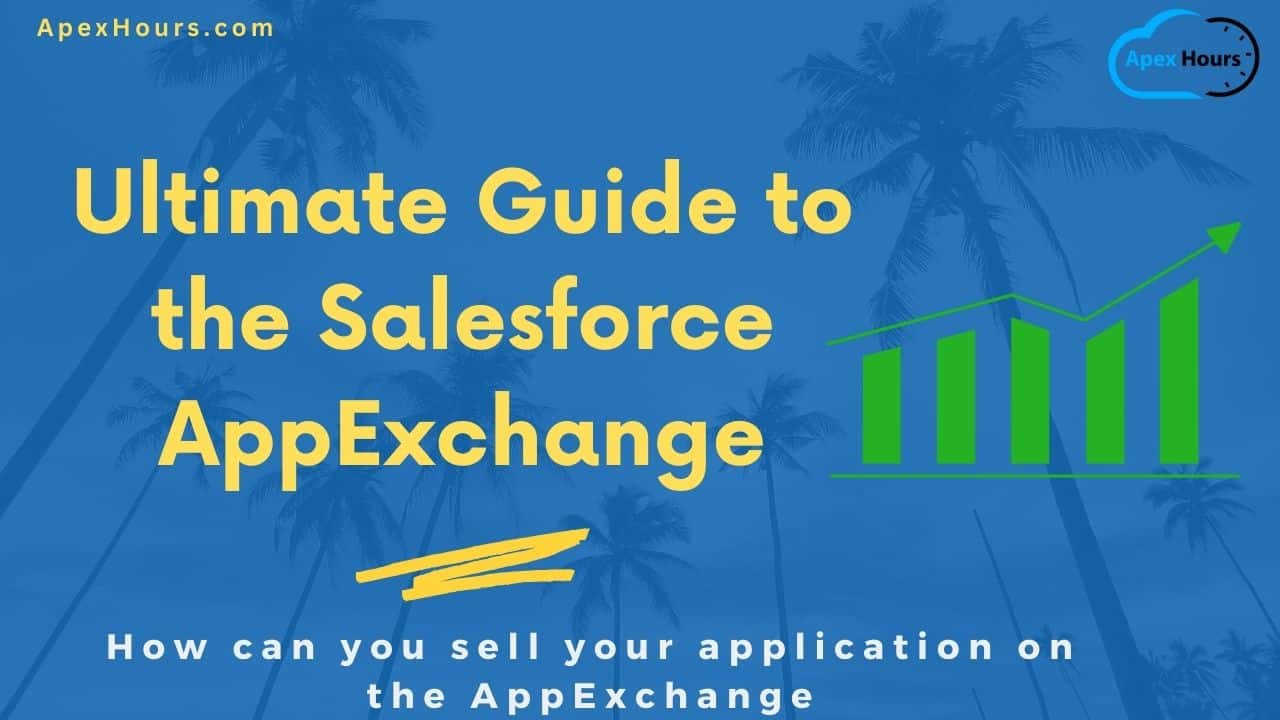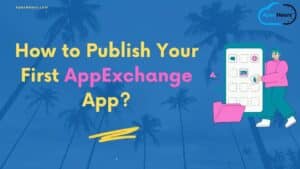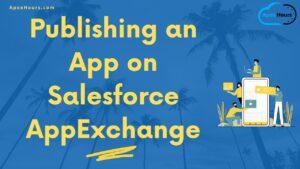This blog will clarify all the concepts related to AppExchange. There are many articles about AppExchange, but few of them cover all the aspects. If I ask you a question, What is AppExchange? The answer is quite simple. But there are a lot of people having misconceptions about that. In this blog, I’ll try to answer most of the frequent and rare questions professionals and experts ask. Let’s see How you can sell your application on the App Exchange with our Ultimate Guide to the Salesforce AppExchange.
What is AppExchange?
AppExchange is a marketplace where you can sell your business application to grow your business. It is not only limited to Salesforce; I’ll give a deeper answer to this later in this blog. Also, AppExchange is the best place to sell your application to reach your customers. Let’s get deeper into AppExchange.
Why should you sell your application on AppExchange?
Some of the points are the reason that you should sell your application on AppExchange.
- Broad Customer Base: First, it provides a broad customer base. With the help of AppExchange, your application can reach millions of customers.
- Brand Exposure: Second is that your app will get a huge brand exposure i.e your app will get more visibility.
- Validation and Credibility: Third, you want to gain more validation and credibility. Actually, Salesforce performs a lot of security checks before publishing apps on its platform. So, it is obvious that if your app is published on AppExchange, it means your app is trustworthy to use.
- Streamlined Sales Process: Fourth is it will simplify your sale. All your efforts to sell your app will get simpler with AppExchange.
- Support and Innovation: And Fifth and last, the platform supports you in a lot of ways like innovations and upgradation of your application.
What are some myths about AppExchange
What are some myths about AppExchange: let’s break them one by one
Myth no 1: Only people related to Salesforce can sell their application on AppExchange.
Reality: This myth is believed by many people that AppExchange is a platform built by Salesforce, so only people related to Salesforce can sell their apps on AppExchange. But in reality, each and every person related to Salesforce or not can sell their application on AppExchange.
Here are some examples of apps that are present on the AppExchange but are not related to Salesforce: DocuSign, SurveyMonkey, Slack, Dropbox, HubSpot, etc
Myth no 2: Only salesforce partners can sell their applications on AppExchange.
Reality: This is another myth present in people’s minds that only salesforce partners or salesforce customers can sell their app on AppExchange. Which is not true.
Myth no 3: Salesforce is only suitable for large enterprises.
Reality: In reality, salesforce or salesforce AppExchange is suitable for all the small cap and large cap businesses and it is providing a supportive environment to all the levels of enterprises.
Myth no 4: You need to be a technical genius to use Salesforce.
Reality: You need not to be a technical genius to use Salesforce or Salesforce AppExchange. You only need the domain knowledge or have to choose a person who has such knowledge. This blog will also cover how you can choose the right person who can help you to put your app on AppExchange.
Myth no 5: The price on AppExchange must be high.
Reality: Price of a certain application is dependent on various factors like complexity of the app, target market, and much more. AppExchange provides you a flexibility of price range according to your requirement and what kind of application is. Additionally any application cannot be determined by its pricing.
Myth no 6: AppExchange is having only paid applications
Reality: this is also not a reality. AppExchange contains both free as well as paid applications in its platform. Again, the price of an app will totally depend on features, functionality, etc it is providing to its customers.
Some of the apps are paid on AppExchange like Cirrus Insight and PhoneBurner while some of the apps are free like QuickBooks. Also some are free and charge based on the requirements like Call Prep.
A step-by-step guide to putting your app on AppExchange
- Gather technical requirements: this is the first step of defining the purpose of your application: what exactly you want to give to your customers and what will be your targeted markets. What technical stuff you will require, etc.
- Develop a clear value proposition: what service or what value your customer will get from your app is a very crucial role in developing your app.
- Provide excellent customer support: this will help your customer to solve their queries and concerns they might have.
- Create a polished user interface and experience: Apps having user friendly interface and experience have always have high probability of getting engagements.
- Testing and Quality Assurance: test each functionalities, performance of the app and usabilities thoroughly.
- Market your app effectively: This is the important step after your app gets published. You have to market your application smartly.
- Security review: review app code, check for the vulnerabilities, also ensure that your application meets the standard salesforce’s security policy.
Learn more about Publishing an App on Salesforce AppExchange.
Types of pricing
Free
The applications that are available for free on the AppExchange or they don’t charge anything to use it or download it to their customers. In case some of the apps just need to marketize it or just want to get collaborated with the salesforce are mostly free, but again not applicable for all apps. The reason for the app to be free may vary depending on different factors.
Paid
The applications that are paid or charge their customers to use it. In a nutshell, customers must pay to use these applications.
Paid Add-Ons Required
The paid add-on apps are those apps that offers some additional paid service or features to extend the functionality of its free or paid customers. These apps are typically add-ons to the Salesforce ecosystem to help customers increase functionality. For Example, mapping application that helps customers to map their accounts with salesforce.
Freemium
These applications allows their users to use the limited features of it for free. But must pay for the extra features or functionality.
Discounts for Nonprofits
Imagine a tool called “Discounts for Nonprofits” like a helper for charities. It makes it easier for them to get discounts when they buy things. This tool works inside another tool called Salesforce, where charities keep track of their work and money. So, with “Discounts for Nonprofits,” charities can save money and do their work better.
How Salesforce helps to manage apps
Feature Management Application (FMA):
FMA helps businesses to manage and control features and functionalities within the salesforce environment. It allows the admin of the application to enable, or customize the specific features based on certain requirements and preferences.
In simple terms, it’s like having a remote control for different parts of the app. Which helps to turn on/off features of the app.
License Management Application (LMA):
The License Management Application (LMA) on the Salesforce AppExchange is a tool designed to help software vendors manage and track the licenses for their Salesforce applications. It allows vendors to monitor the usage of their applications, track customer subscriptions, manage renewals, and provide support to their customers.
In simpler terms, it’s like a dashboard for companies that make apps for Salesforce. This tool helps them keep track of who’s using their apps, how many people are using them, and when subscriptions need to be renewed. It helps app makers stay organized and provide better service to their customers.
Channel Order Application (COA):
The Channel Order Application on the Salesforce AppExchange is a tool that helps companies manage their sales orders through different channels or methods. It allows businesses to streamline the process of receiving, processing, and fulfilling orders from various sources, such as online sales, retail stores, or distribution partners.
In simpler terms, it’s like a central hub where businesses can keep track of all the orders they receive, no matter where they come from. This helps them stay organized and ensures that orders are handled efficiently and accurately, leading to better customer satisfaction.
How to choose the right person to implement and develop your application:
While choosing the person to implement your app you should consider few points like:
- Expertise: The person should have a relevant skill set that matches your developing requirements.
- Values: The person should have decent value that matches your scope of the project.
- Project scale: It would be advantageous if a person has worked on various categories of developing the application. Such person would understand the project purpose and implementation more clearly.
Here are some other things to consider when choosing the right person to implement your application:
- Application performance
- User journey
- Integrations
- Problems the app solves
- Accessibility
- Cross-platform scalability
You can consider these steps when selecting a candidate:
- Define the project
- Create a budget
- Research the company
- Review the job application
- Conduct interviews
- Give applicants opportunities to ask questions
- Compare candidates




